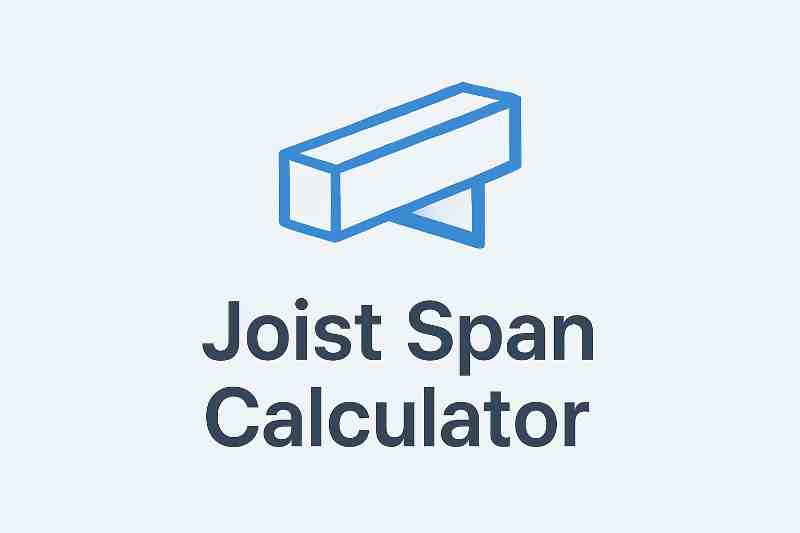Yes, in many places, but it depends on local zoning laws. I’m here to guide you through the rules, costs, and practicalities of living in an ADU full-time. Whether you’re downsizing or seeking affordable housing, ADUs offer a unique solution. Let’s explore what makes this possible and what you need to know.
I’ve dug into zoning regulations, construction costs, and real homeowner experiences, including Reddit insights, to give you a clear picture. From legal requirements to budgeting tips, I’ll help you decide if an ADU is your ideal home.
What Is an ADU?
First things first, an ADU is a secondary living space on the same property as a primary home. It includes a kitchen, bathroom, and sleeping area, making it fully independent. You might find ADUs as detached cottages, garage conversions, or even basement apartments. Their versatility makes them appealing for homeowners wanting extra space or income.
Why Consider an ADU as a Primary Residence?
Living in an ADU as your main home sounds unconventional, but it’s gaining traction. You might want to downsize, save money, or stay close to family while maintaining privacy. Some folks on Reddit, like users in r/Homebuilding, mention using ADUs for affordable living in high-cost areas. It’s a smart way to maximize property use without buying a new house.
Types of ADUs You Can Live In
ADUs come in various forms. Detached ADUs stand alone, like a backyard cottage. Attached ADUs share a wall with the main house. Garage or basement conversions repurpose existing spaces. Each type affects whether you can use it as your primary residence, depending on local rules and your needs.
How Size Impacts ADU Livability
Size matters when considering an ADU as your main home. Most ADUs range from 400 to 1,200 square feet, though some areas, like California, cap them at 800 square feet. Smaller units, like junior ADUs under 500 square feet, might feel cramped for full-time living but work for minimalists.
Can You Legally Live in an ADU as Your Primary Residence?
Now, let’s tackle the big question: can an ADU be your primary residence? The answer depends on where you live. Zoning laws vary widely, and I’ve dug into some specifics to clarify what’s allowed. In many places, ADUs are designed as secondary units, but some regions permit them as primary homes under certain conditions.
Zoning Laws and ADU Regulations
Local zoning laws dictate ADU use. In California, for example, recent laws allow ADUs on single-family lots, and some cities permit them as primary residences if the owner lives on the property. A Reddit user in r/orangecounty noted that Iowa now allows ADUs up to 1,000 square feet with no occupancy restrictions. Check your local housing department to confirm what’s allowed in your area.
Owner-Occupancy Requirements
Many cities require the property owner to live in either the ADU or the main house. This ensures ADUs don’t become standalone rental properties. For instance, Washington, D.C., allows ADUs without a certificate of occupancy if the owner resides on-site. If you plan to live in the ADU full-time, this rule often supports your goal.
Permits and Building Codes for ADUs
Building an ADU requires permits, which ensure compliance with safety and zoning codes. You’ll need detailed plans for plumbing, electrical systems, and a separate entrance. Some areas, like Bremerton, Washington, offer pre-approved ADU plans to simplify the process. Permits typically cost $500 to $2,000, depending on your location.
Regional Differences in ADU Rules
Rules differ across states and cities. Massachusetts’ Affordable Homes Act allows ADUs up to 900 square feet in single-family zones without special approval. In contrast, New York City has stricter guidelines, requiring careful navigation of permits and space requirements. Always verify local regulations before planning your ADU.
How Much Does It Cost to Build an ADU?
Wondering about the price tag? Building an ADU isn’t cheap, but it’s often more affordable than buying a new home. Costs vary based on type, size, and location. I’ve pulled data from recent sources and Reddit discussions to give you a realistic range for budgeting your ADU project.
Detached ADU Construction Costs
A detached ADU, like a backyard cottage, typically costs $150,000 to $285,000. You’ll need a new foundation, utilities, and walls, which drive up expenses. In high-cost areas like San Francisco, expect to pay around $330,000 for a standalone unit. Site preparation, like grading, adds $1,500 to $10,500.
Attached ADU Price Range
Attached ADUs, sharing a wall with the main house, cost $125,000 to $216,000 for a 600-square-foot unit. They save money by using existing walls and utilities. If you’re on a budget, this option balances cost and functionality while providing a comfortable living space.
Garage Conversion as a Cost-Effective Option
Converting a garage is often the cheapest route, ranging from $20,000 to $140,000. Since the structure already exists, you save on foundation and framing costs. However, plumbing or electrical upgrades can increase expenses. Reddit users in r/Homebuilding praise garage conversions for their affordability in urban areas.
Prefab ADUs for Faster Builds
Prefabricated ADUs, built off-site and assembled on your property, cost $80 to $160 per square foot. For a 600-square-foot unit, that’s $50,000 to $100,000. They’re quicker to install but offer less design flexibility. If speed and savings matter, prefab is worth considering.
Hidden Costs to Watch For
Don’t forget additional expenses. Permitting fees, utility hookups, and design costs add up. Architectural fees can be 8-15% of the project cost. In Temecula, California, a small junior ADU starts at $182,000, while larger units hit $540,000. Plan for contingencies like weather delays or material shortages.
Benefits of Living in an ADU as Your Primary Residence
Why choose an ADU as your main home? It’s not just about cost savings. ADUs offer unique advantages that make them appealing for full-time living. Let’s explore why this setup might work for you, based on real-world examples and homeowner experiences.
Affordability Compared to Traditional Homes
ADUs are often cheaper than single-family homes. With average costs between $100,000 and $300,000, they’re a fraction of the price of a new house in many markets. In California, where housing is pricey, ADUs provide an affordable way to own and live on your property.
Flexibility for Multigenerational Living
ADUs shine for families wanting to stay close. You can live in the ADU while renting out the main house or vice versa. This setup suits aging parents or adult children needing independence. Reddit discussions highlight ADUs as perfect for multigenerational households in tight markets.
Increased Property Value
Building an ADU can boost your property’s worth. Real estate experts note that ADUs add functional square footage, attracting buyers. In areas with high rental demand, the potential for rental income further increases value, making it a smart long-term investment.
Sustainable and Compact Living
ADUs use less water and electricity than larger homes, making them eco-friendly. Massachusetts’ zoning changes emphasize their sustainability. If you’re into minimalism or reducing your environmental footprint, living in an ADU aligns with those goals while keeping you comfortable.
Challenges of Using an ADU as a Primary Residence
Living in an ADU full-time isn’t without hurdles. I’ve looked at common issues homeowners face, including insights from Reddit communities, to give you a balanced view. Knowing these challenges helps you plan better and avoid surprises.
Limited Space for Full-Time Living
ADUs are small, often under 900 square feet. This can feel restrictive if you’re used to larger homes. You’ll need to downsize possessions and embrace minimalism. For couples or small families, this works, but larger households might struggle with space.
Navigating Local Restrictions
Zoning laws can complicate things. Some areas limit ADU size or require owner-occupancy, which might not suit your plans. In New York City, strict regulations make permits tricky. Researching local rules upfront saves headaches during the building process.
Higher Utility and Tax Costs
ADUs increase utility bills and property taxes. If you rent out the main house, tenant-related expenses add up. A Reddit user in r/Homebuilding mentioned unexpected tax hikes after building an ADU, so consult a tax professional to understand your financial impact.
Maintenance Responsibilities
Like any home, ADUs require upkeep. If you live in the ADU and rent out the main house, you’ll handle landlord duties. Maintenance costs for plumbing, electrical, or HVAC systems can eat into savings, so budget for ongoing expenses.
How to Make an ADU Your Primary Residence
Ready to move into an ADU? It’s doable with the right approach. I’ll share practical steps to ensure your ADU meets your needs as a full-time home, drawing from homeowner experiences and expert advice.
Check Local Zoning and Permits
Start by contacting your local housing department. Confirm if ADUs can be primary residences in your area. California’s relaxed laws make this easier, but other regions vary. Secure permits early to avoid delays, and consider pre-approved plans for faster approval.
Choose the Right ADU Type
Pick an ADU that fits your lifestyle. Detached units offer privacy but cost more. Garage conversions save money but might sacrifice parking. Evaluate your space and budget to decide what works best for full-time living.
Plan for Comfort and Functionality
Design your ADU with livability in mind. Include large windows for natural light, efficient HVAC for comfort, and accessible features if mobility is a concern. Reddit users suggest universal design elements like wider doors for long-term usability.
Budget Wisely for Construction
Set a realistic budget, factoring in construction, permits, and utilities. A 500-square-foot ADU might cost $165,000 to $220,000, per Colorado averages. Work with experienced contractors to avoid cost overruns, and explore financing options like home equity loans.
Consider Rental Income Potential
If you live in the ADU, renting out the main house can offset costs. In high-demand areas, this boosts your income. Ensure your ADU meets local rental regulations if you plan to switch between living in it and renting it out.
FAQs About Using an ADU as a Primary Residence
Got questions? I’ve answered five common ones to clear up any confusion about living in an ADU full-time.
Can an ADU legally be my primary residence?
Yes, in some areas like California, ADUs can be primary residences if the owner lives on-site. Check local zoning laws for specific rules.
How much does it cost to build an ADU?
Building an ADU costs $100,000 to $300,000, depending on type and location. Garage conversions are cheaper, starting at $20,000.
Do ADUs need separate utilities?
ADUs require independent utilities like plumbing and electricity. Sharing with the main house can save costs but must meet codes.
Can I rent out my main house if I live in an ADU?
Yes, many areas allow renting the main house if you live in the ADU, but confirm local regulations first.
Are prefab ADUs suitable for full-time living?
Prefab ADUs work for full-time living, offering quick setup and lower costs, though design options are limited.
Conclusion: Is an ADU Right for You?
Living in an ADU as your primary residence is a bold, practical choice in today’s housing market. It offers affordability, flexibility, and sustainability, but zoning laws and costs require careful planning. I’ve laid out the rules, expenses, and benefits to help you decide. Whether you’re downsizing or maximizing your property, an ADU could be your perfect home. Check local regulations, crunch the numbers, and start planning your dream setup today!


